Richard has been in touch with a wonderful ‘how to’ on battery powered model trains:
“The documentation of the Extended Helix Railroad indicated that I had advanced to a battery powered railroad.
The main document provided electrical schematics of the battery interface, but no pictures.
I have located the pictures and will provide them in this appendix.
While working on the Extended Helix Railroad, I added a small linear test track and a small Christmas Tree Railroad to check out the battery operation.
The linear test track was approximately 2 feet long and had a power supply connection which allowed non‐battery trains to be tested.
The power supply interface also provided a connection for an oscilloscope for monitoring the digital pulse width performance of the engine when running on a power supply or on battery supply.
Figure 1 shows the linear test track was used to monitor the pulse width modulation and Figure 2 shows the loop around test track that could also serve as a Christmas Tree Railroad for the Holidays.
The tree stood in the center and the grandkids got their fix of model railroading.
Linear test track
Christmas tree railroad
Some of your astute readers may notice that the houses under construction on the upper level are sized for HO unlike the buildings on the lower level that are correctly sized for N Gauge. The HO Gauge versions were not available in N Gauge at the time of purchase just before Christmas.
Thankfully the grandkids didn’t recognize the size differences between the upper and lower levels.
This test track could be operated with a power supply for trains not equipped with a Control Chip and Battery Supply, or with a Control Chip and Battery Supply for the trains already converted to battery operation.
Figure A3 shows some of the construction techniques used to add battery power to the trains.
The picture shows four flat cars with a “B” size Lithium‐Ion battery in each flat car.
The “B” designation is not an official size designation. It is my documentation of a size that is bigger than my “AAA” and “AA” size Lithium‐Ion Batteries but smaller than my “C” and “D” size Nickel Metal Hydride Batteries.
The “N” gauge engines are too small to add the chip for control, a speaker for sound and the Batteries to achieve approximately 15V power.
The Pennsylvania Railroad Engine would appear to be large enough to support the chip and a speaker, but I found that the dimensions of the engine were just a little too small.
I decided to install the control chip and a speaker in the box car closest to the tender and install two “AA” size Lithium‐Ion Batteries in the next two box cars. This configuration permitted the three box cars to be joined with different engines if I re‐initialized the chip before running the next train.
The engine must be identified with a specific engine label to calibrate the chip for a new label and appropriate engine short circuit current draw for safety.
I interconnected the engine and cars via gold plated military grade pins and number #30 heavy “foam‐var” insulated solid copper wire. The pins consist of male and female connections that can be easily separated but still provide a low loss junction.
Control chip, speaker and twin “aa” battery installation in box cars
Battery powered model trains:
The “B” red colored Lithium‐Ion Batteries on the four flat cars shown in Figure A3 offered much longer train operating time between charge times. These 3.7V batteries were heavy and required at least four flat cars to achieve the 15V power for the train.
The train composition was an engine, tender, one box car (the controller and speaker), and four flat cars each containing one “B” Litium‐Ion Battery. Any remaining freight cars would be added at the end of the train.
The battery laden flat cars were always placed forward of all freight cars to prevent pulling over the freight cars on tight curves when the heavy battery flat cars were placed after the freight cars and to prevent running the power wires to the engine any farther than necessary.
The batteries provided three to four hours of running time and never exhibited the potential fire condition reported by the news media during operation or charging due to a safety circuit built internally into the battery casing.
The second generation of battery powered model trains was developed using “AAA” Lithium‐Ion Batteries that were installed on flat cars or within box cars. I was able to install four “AAA” LI Batteries on each flat car shown in Figure A4 or two in each box car as shown in Figure A3.
The train could be operated for nominally two hours with one flat car or two box cars.
The third box car containing the control chip and speaker was required for the single flat car or the two box cars. This shortened the train for better use of additional freight cars.
The battery connections on the flat cars needed to be taped to prevent snagging debris along the track and in the tunnels. The battery connections in the box cars have socket pins installed in the box car roof to interconnect the batteries and the control car with the engine as shown in Figure A3.
Packaging of four “AAA” lithium?ion batteries on one flat car
An example of the Ring Engineering Control Chip LM3S is shown in Figure A5.
Four LM3S Control Chips were installed in four different box cars to operate four different trains.
Three additional LM3S Control Chips were installed in an Amtrak Baggage car Figure A6, and two dummy F3 Diesel “B” engines Figure A7 to accommodate the three operational passenger trains.
Two additional Amtrak baggage cars were set up as battery cars as shown in Figure A8.
Since the track power will no longer be used, all lighted passenger cars and cabooses needed batteries to energize Light Emitting Diodes LED with a current limiting resistor and a means to turn the lighting on and off.
These cars were powered by a 3032 Series Disk Battery in each car. Each car was configured with three roof mounted socket pins to turn the LED on and off and a connection to charge the individual 3032 battery from a remote charging source. A metal staple was connected across two of the exposed pins to complete the electrical path and then removed when the LED was to be turned off.
Figure A9 shows the electrical installation of two LEDs, a 3032 Series Disk Battery and Figure A10 shows the roof socket pin connections.
For example, charging is made by inserting two pin connections in the wide spaced sockets in the Pennsylvania Railroad PRR passenger car from a charging power supply.
One of the charging sockets and a close spaced socket are interconnected by a metal staple when passenger car lighting is desired.
Ring engineering control chip lm3s and speaker installed in a box car
Amtrak baggage car ring engineering lm3s control chip
One of two dummy f3 diesel engines with the lm3s control chip and speaker
Amtrak baggage cars with two “aa” lithium?ion batteries
Installation of the led at opposite ends of the amtak passenger car and a disk battery to the left of center in the car.
Amtrak and prr passenger car socket pin connections in the passenger car roof for led 3032 disk battery charging and to turn on and off the led.
Richard”
A huge big thank you to Richard for sharing his ‘how to’ on Battery powered model trains. Clever stuff.
It reminded me of Rob’s post:
There’s also Keith’s stunning layout, which is battery powered:
Battery power for model trains.
That’s all for today folks.
Please do keep ’em coming.
And if today is the day you get started on your layout, the Beginner’s Guide is here.
Best
Al
PS More HO scale train layouts here if that’s your thing.
Need buildings for your layout? Have a look at the Silly Discount bundle.
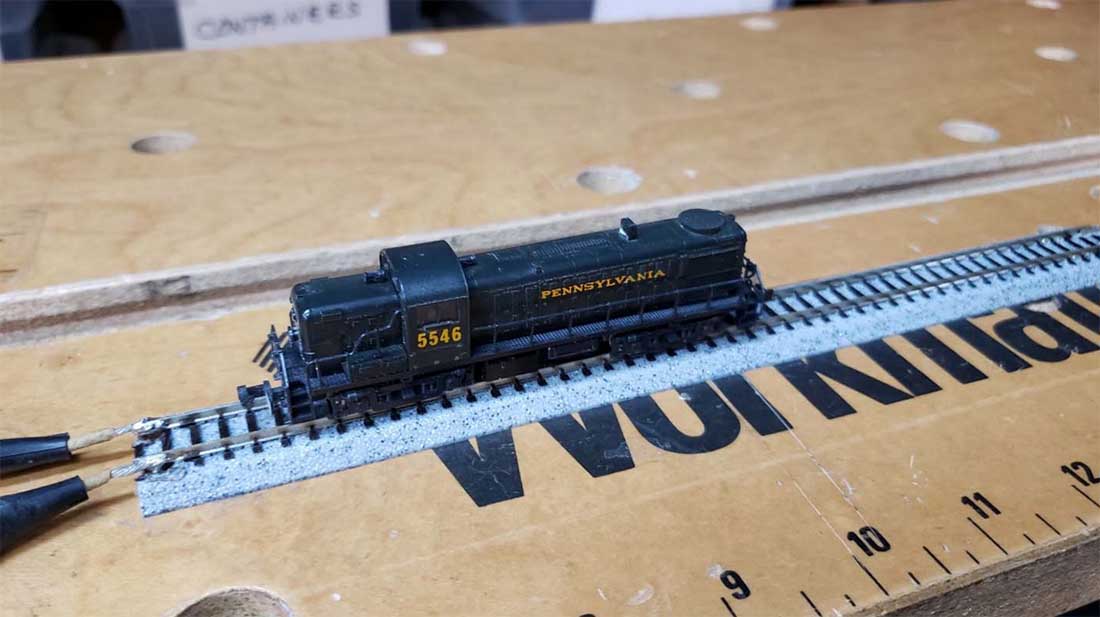
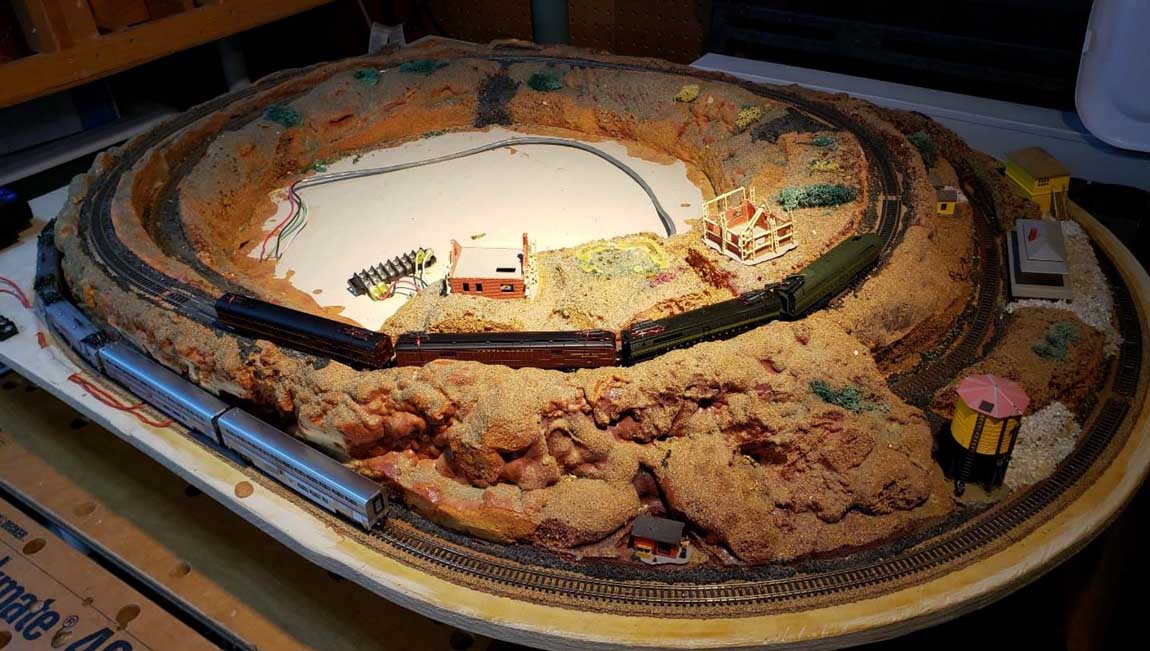
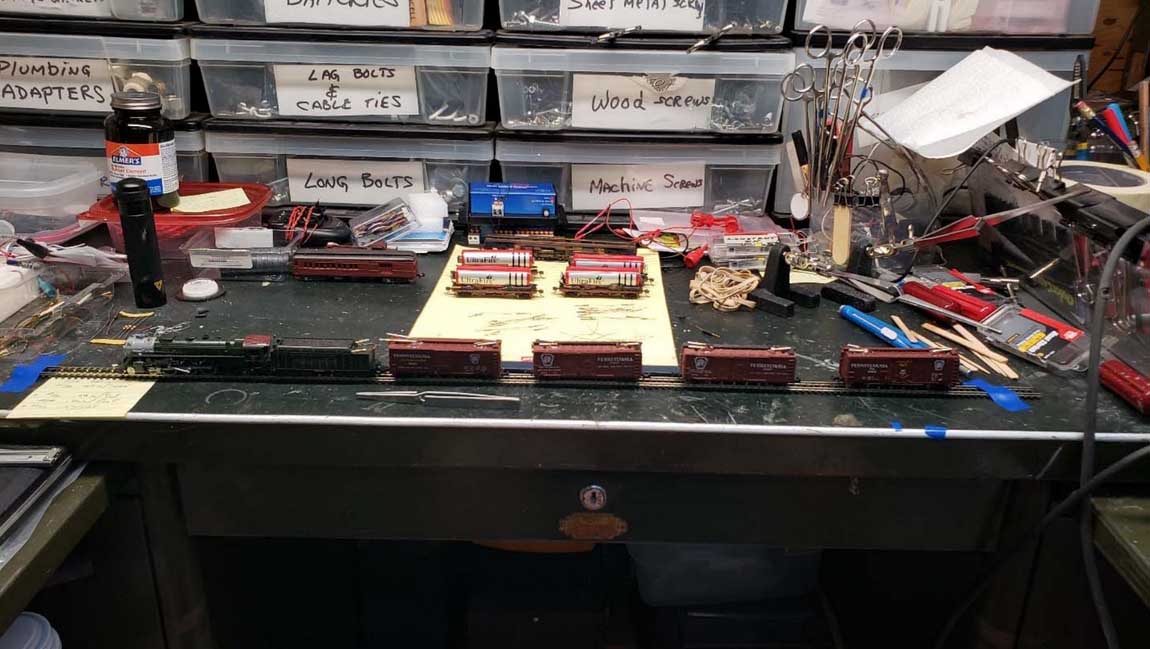
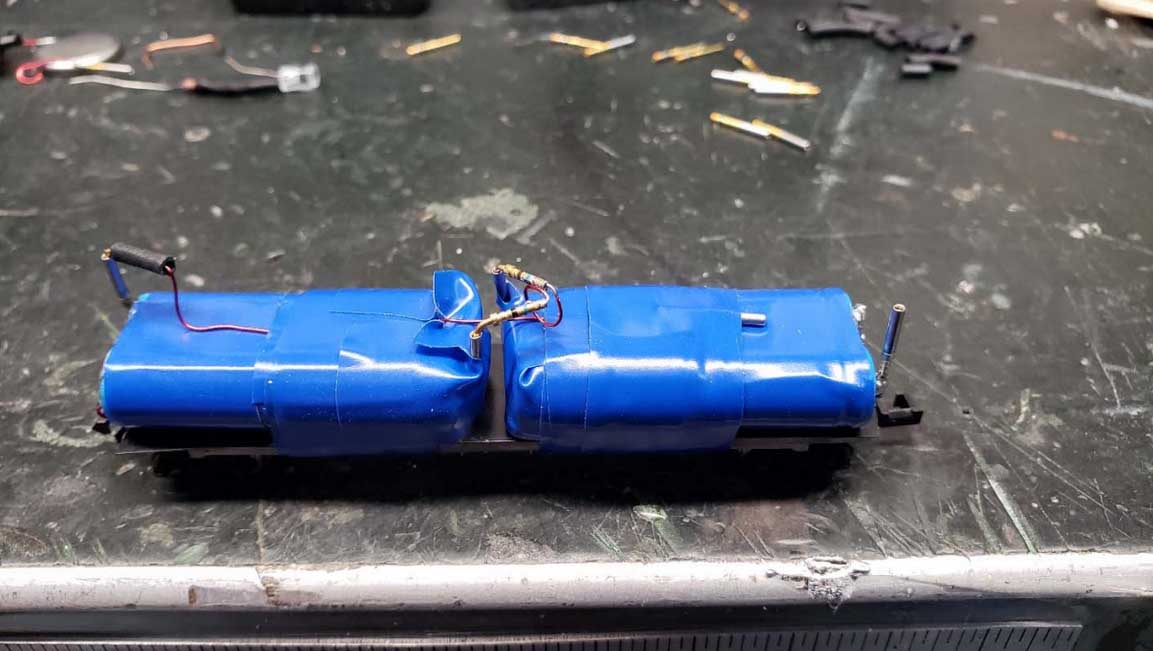
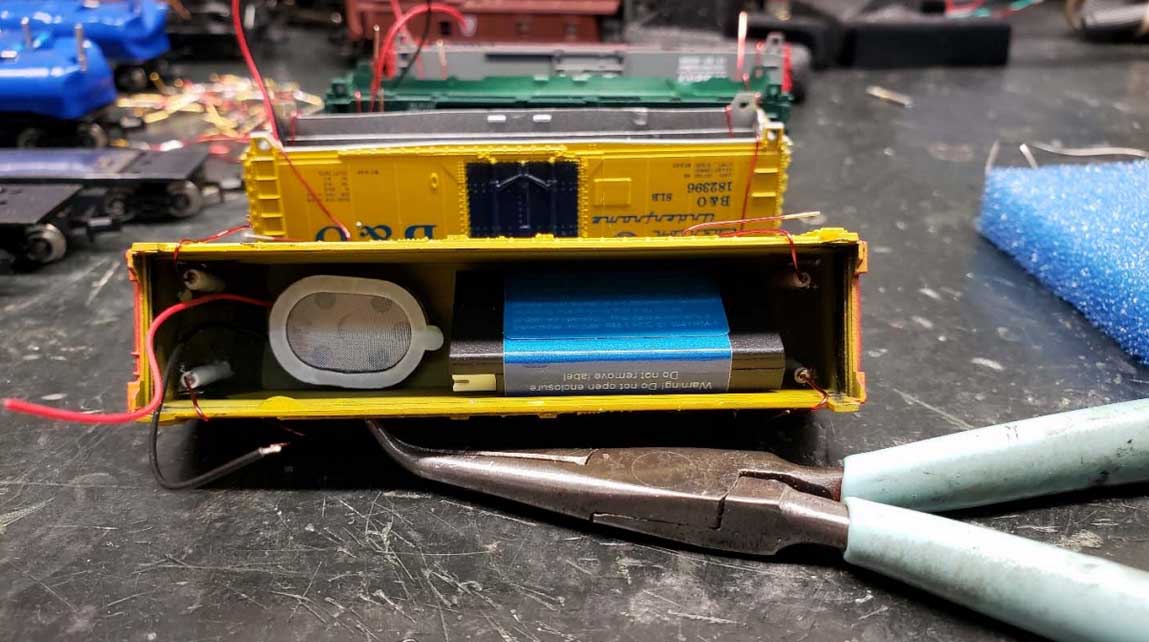
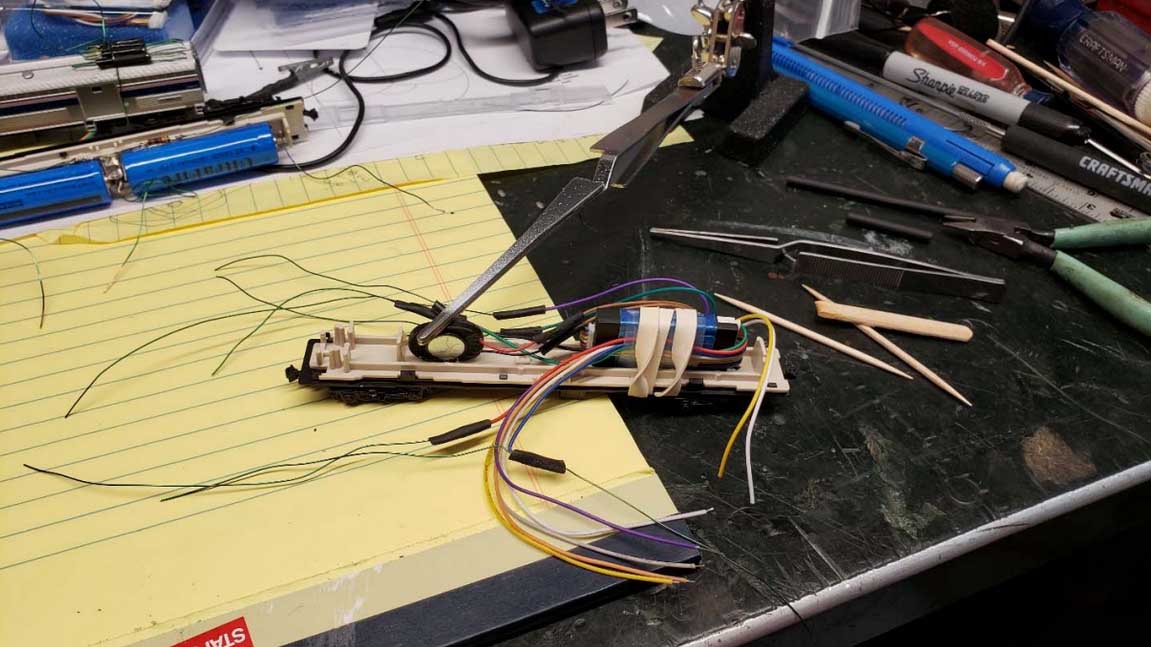
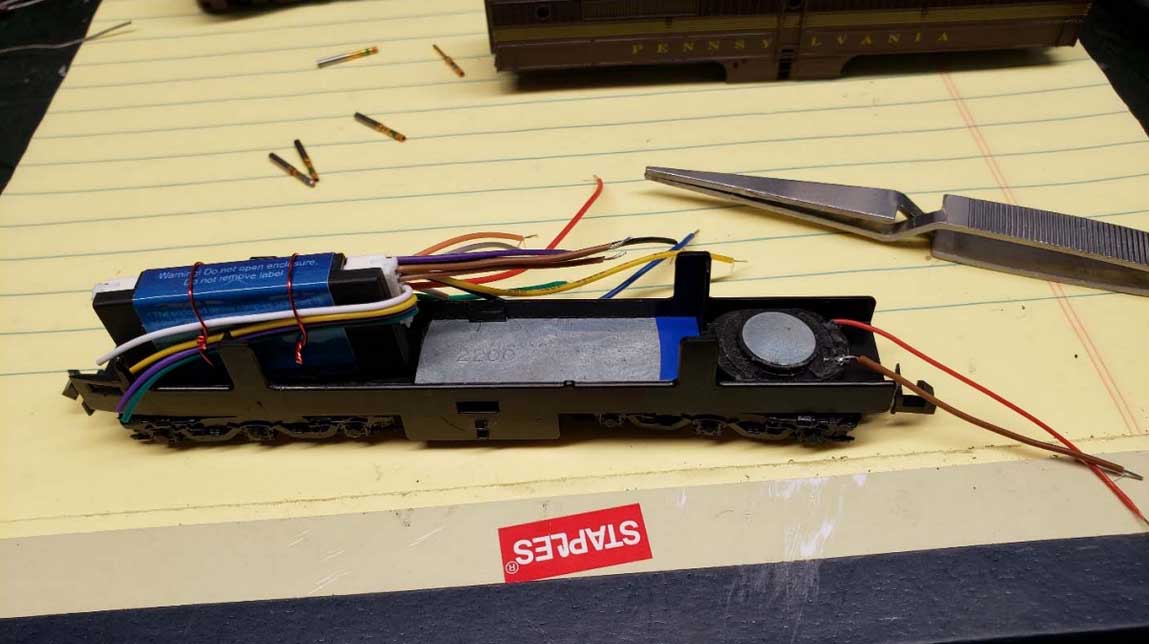
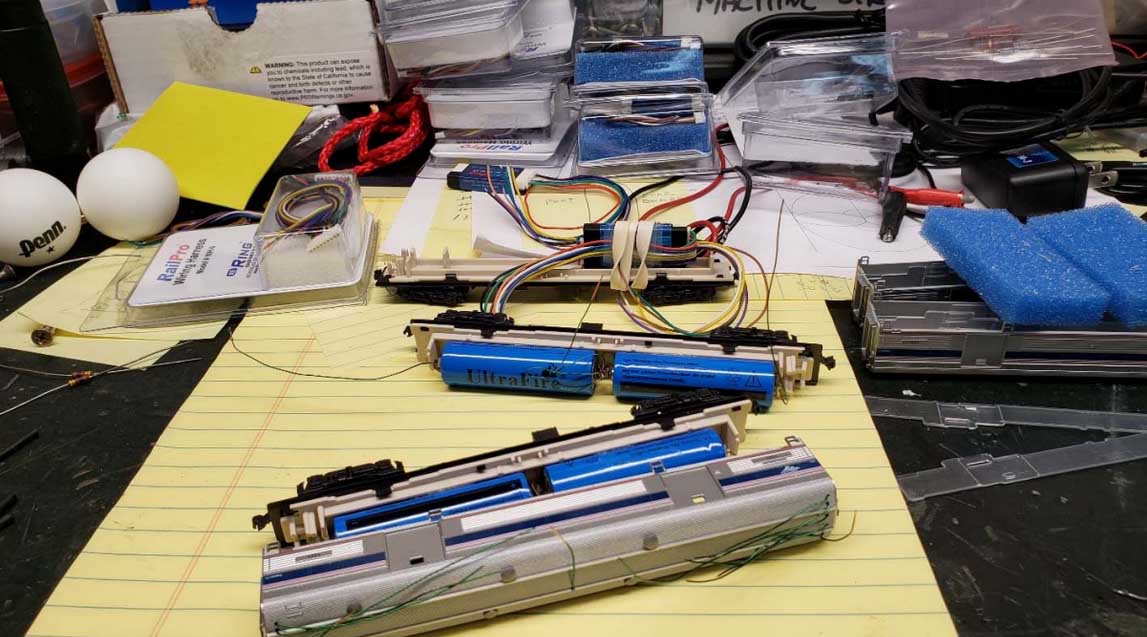

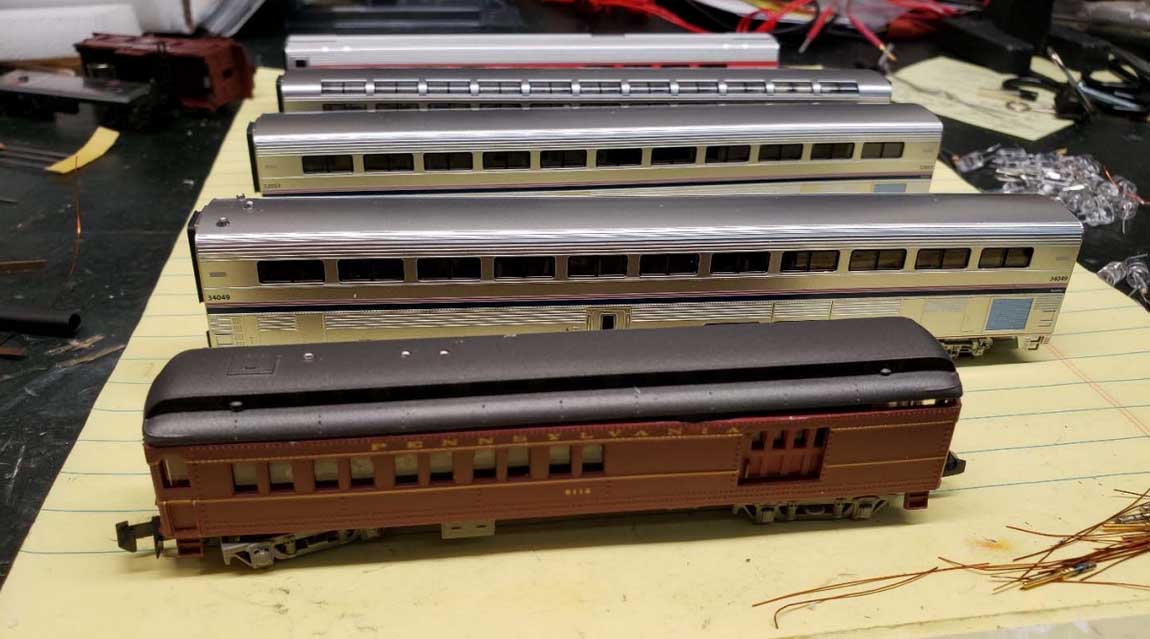

never really liked battery powered trains, but these look nice.
Good luck with that project. Honing electronic skills continuously isn’t bad idea however. Today I can’t soldier like in the old days, circuit boards and harness connector pins for aircraft OMG.
Rich
I’ll stick with electric power, but certainly another option for our hobby.
I love the idea of battery powered engines. It certainly eliminates all the dirty track problems and uneven track creating dead spots in the layout. In HO scale that could be very frustrating.. I converted over from O to HO about two years ago and never realized how much better O was for reliable train running.
Thanks for sharing
The next step is to install cameras in all the engines and then run the trains from a central cab with a video screen so you’re actually controlling the engine like an engineer inside of it. No block controls or walking around the layout with the DCC controller. Just running the train under it’s own power from the cab of the engine and following the instructions from the dispatcher and the signals along the way.
I received a column today from a home repair guru about a house that burned down due to a Lithium battery.
Just sayin’.
For those concerned with dirty track in HO (or N), check out the you tube videos about conductive grease…It solved all my problems in that area… Haven’t had to clean track for years! Do the pickup wheels also…The grease is available on Amazon ..Look for No -OX- ID…
Thanks for your input and know how for those that want to go that a route. I want olso to thanks Fred O. for his input on conductive grease. You just never know what you can learn by reading comments or just reading in general. Even us old farts still have lots to learn Thank you to you too Al for all you provide us with.
Strange! 🤔
What a great way to avoid all manner of problems:
:dirty track
:voltage drops
:having to isolate sections
:reverse loops
If AAA batteries are too large (or heavy), there are also the harder to find AAAA sizes (I was surprised too).
The only downside that I can see is how to control the speed once the train is heading down the tracks.
And, of course, a huge thanks to Al who makes all of this discussion possible.
Go for it!
Paul (a soon to be *Old Fart* on Oct 31st when I will be 70). Isn’t life grand?